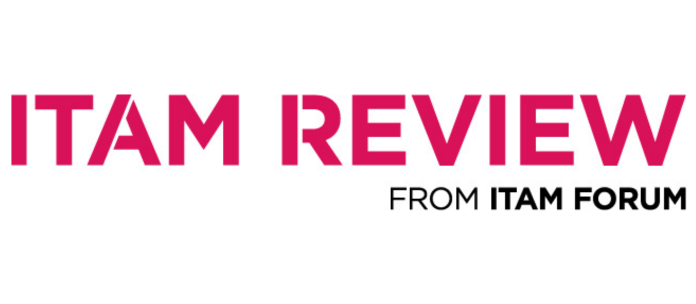TCO Certified Announces New Sustainable IT Criteria
Global sustainable IT certification body TCO Certified has launched the latest edition of its criteria to certify IT products. Alongside the standard, it also revealed an ambitious ten-year roadmap, which, if successful, will see a return to more modular, repairable, and longer-lasting products produced in cleaner and more equitable factory conditions.
The standard contains four areas – Climate, Substances, Circularity, and Supply Chain. These four areas support each other in holistically delivering sustainable IT and technology purchasing decisions.
Climate
Climate announcements include requiring brands to purchase renewable electricity equivalent to 15% of what they consume in production of their products in Final Assembly factories. Alongside this is a requirement to extend product life to more than five years. Importantly, this includes a requirement for free security software updates for the same time span. This reduces software-induced obsolescence. We already see this in mobile devices. Leading brands such as Samsung, Google, and Apple already support many devices for this long.
Substances
Perhaps surprisingly, only around 1% of substances used in technology have been risk assessed for damage to the environment and human health. TCO Certified now consider all substances to be toxic unless evaluated and added to the Approved Chemicals list. Only approved chemicals may be used in certain stages of the manufacture of TCO Certified products.
Circularity
Circularity is perhaps the area of most interest to (and alignment with) ITAM teams. In addition to the five-year lifespan. devices must also have (drumroll) user-replaceable batteries.
Now, I’m showing my age, but I remember the days of battery charging docks for smartphones where you could swap a battery for your commute home. Other than the TCO Certified Fairphone, it’s hard to find a smartphone with a swappable battery. The last mainstream devices I recall were from LG, and they disappeared before 2020.
Alongside this announcement is a repairability index, which builds on EU and French legislation. It details how easy it is for end users or independent repair shops to repair mobile devices. I think it’s safe to say we won’t see any shiny objects from Cupertino scoring highly anytime soon!
Supply Chain
Cleverly, TCO Certified works to improve worker conditions in low-wage, low-regulation economies by holding brands to account and requiring them to source from approved Final Assembly factories. In doing so, this encourages factory owners to improve conditions to win assembly business. The latest update extends this requirement to display panel factories, which in turn, supply the Final Assembly factories.
Towards 2033
One of the primary reasons for TCO’s success in encouraging sustainable IT practices is that it publishes a very-clear roadmap with milestones set along the way. The 2033 goals are ambitious. The vision is for all certified products to be climate neutral, manufactured entirely from safe substances and in factories with the well-being of people and the planet in mind.
Benefits for ITAM Teams
For ITAM teams, there are exciting proposals that should make the management, identification, and disposal of devices easier. These include a “digital passport” for each device listing the as-shipped componentry, repair resources, and sourcing information for spare parts. It’s easy to see how this data could be made available in our ITAM tools. This would give us the richest HAM data we’ve ever had.
Furthermore, we’ll be sweating those assets for longer. To be certified in 2033, a device will have a lifespan of at least 10 years.
And, finally, good news for often-neglected ITAD programs. Manufacturer-supported buy-back programs are required for long-lived assets that have reached end-of-life with first-owner organisations.
Find out more about TCO Certified and its 2024 standard and roadmap.
Can’t find what you’re looking for?
More from ITAM News & Analysis
-
Broadcom vs Siemens AG - A Brewing Storm
The ongoing legal battle between VMware (under Broadcom ownership) and Siemens is yet another example of why ITAM goes far beyond license compliance and SAM. What might, at first glance, appear to be a licensing dispute, ... -
Shifting Left Together: Embedding ITAM into FinOps Culture
During one of the keynotes at the FinOps X conference in San Diego, JR Storment, Executive Director of the FinOps Foundation, interviewed a senior executive from Salesforce. They discussed the idea of combining the roles of ... -
Addressing the SaaS Data Gap in FinOps FOCUS 2.1
I recently reported on the FinOps Foundation’s inclusion of SaaS and Datacenter in its expanded Cloud+ scope. At that time, I highlighted concerns about getting the myriad SaaS companies to supply FOCUS-compliant billing data. A couple ...
Podcast
ITAM training
Similar Posts
-
Broadcom vs Siemens AG - A Brewing Storm
The ongoing legal battle between VMware (under Broadcom ownership) and Siemens is yet another example of why ITAM goes far beyond license compliance and SAM. What might, at first glance, appear to be a licensing dispute, ... -
Shifting Left Together: Embedding ITAM into FinOps Culture
During one of the keynotes at the FinOps X conference in San Diego, JR Storment, Executive Director of the FinOps Foundation, interviewed a senior executive from Salesforce. They discussed the idea of combining the roles of ... -
Addressing the SaaS Data Gap in FinOps FOCUS 2.1
I recently reported on the FinOps Foundation’s inclusion of SaaS and Datacenter in its expanded Cloud+ scope. At that time, I highlighted concerns about getting the myriad SaaS companies to supply FOCUS-compliant billing data. A couple ... -
The Future of ITAM
As an ITAM Industry Analyst, I’m often asked what ITAM’s future looks like. This can be a tough question to answer because when it comes to the future, there are endless possibilities. Often, it seems, some ...




